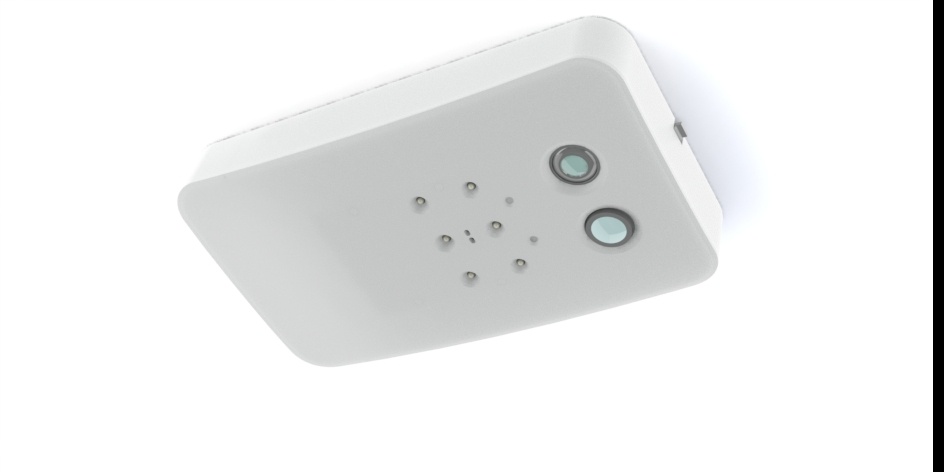Debunking The Myths Of Time Of Flight People Counting
Time of Flight technology in people counting –– What is it, and how does it work? For someone who may not be too familiar with the concept, it may sound like the futuristic pursuit of a Tesla-esque organization. As pioneers in the development and application of Time of Flight sensors, Irisys can confirm that no member of our team bears the surname Musk. We are, however, a group of PhD-level innovators eager to share the benefits and many use-cases of this technology. This article will help you understand what Time of Flight people counting is and dispel some common myths around this subject.
How does Time of Flight people counting work?
A device (typically a ceiling-mounted sensor) sends out an invisible light signal which travels through the air and hits an object within its field of vision. The signal then bounces back to the device and into a receiver, where the onboard AI interprets how long it took for that signal to return.
Multiple beams can be sent out to measure an array of distances, helping the device's machine learning technology to build a layered 3D image of what it is observing. The measurements are highly accurate, and, with the right algorithms, the technology can distinguish between humans and inanimate objects without compromising privacy.
So, now that you know what Time of Flight technology is and how it works, let's explore some of the misconceptions we often encounter.
Myth #1: It's not accurate
Time of Flight technology has a proven accuracy of over 99% in real-world tests –– about as accurate as you can get! Compared to other solutions such as video or stereo-based technologies, it proves to be a much more robust system that can handle rough environmental conditions and maintain a high accuracy level. Compared to cameras that often struggle in poor lighting conditions, infrared technology is incredibly effective at collecting essential people movement and occupancy data.
Myth #2: Time of Flight is old technology
You'll be surprised to learn that time of flight technology is integrated into some of the most advanced tools we use today. Smartphones, for example, use a depth sensor for biometric scanning and identification. Although Time of Flight technology has been in development for many years, its application and integration into new technologies and solutions is only set to continue and evolve.
Myth #3: Time of Flight sensors have a small field of view
Like many other people counting solutions, Time of Flight sensors come with different specifications; wide-angle field of view sensors are available and highly accurate –– there is nothing inherent in the technology that limits the space and width for which it is used. In general, infrared technology naturally lends itself to more expansive fields of view. In some instances, it may be necessary to use more than one device to –– for example, where it's required to cover large entrances in retail stores.
Myth #4: Time of Flight sensors are negatively impacted by sunlight
Irisys devices illuminate the scene with infrared light (the same light emitted by the sun). Naturally, we understood this would create a challenge for the sensor and have spent a long time developing and testing our devices to ensure that they have a high tolerance to sunlight. Our results show that our sensors are fully effective –– even in extremely harsh lighting conditions.
Myth #5: Time of Flight sensors don't work well in crowded environments
Interpreting a densely crowded scene can be difficult for ordinary or camera-based people counters. Low-resolution cameras are likely to deliver a distorted image that makes it difficult to distinguish individuals. On the other hand, a high-resolution camera requires more processing power that slows down the device.
At Irisys, our expert understanding of AI and machine vision has enabled us to create powerful algorithms capable of interpreting crowded scenes and environments. Time of Flight sensors provide an extra dimension of depth, allowing the on-device software to generate a 3D model of the space being monitored; this enables easy differentiation of subject matter and offers a far more accurate way of counting people.
Myth #6: Time of Flight sensors cannot distinguish children from adults
Knowing whether a visitor to your premises is a child or not can be significantly important data for a business or organization. Time of Flight devices are depth sensors, meaning they can accurately measure the distance to the floor and also the distance to the top of the target's head. Targets under a predetermined height are classified as children, and those over the specified height are classed as adults.
Myth #7: Time of Flight sensors are complicated to set up
Once your objectives have been set, it's very easy to identify the ideal location for the Time of Flight sensors. They are quick and easy to install, calibrating automatically in a short time frame. The AI onboard the sensor then learns the background of the scene beneath it and sends feedback to a centralized system for operators to review the data. Our experience in this field has enabled us to understand what installers need to ensure the efficient and successful setup of our devices. Therefore, implementing Time of Flight people counting technology from Irisys is always a straightforward and cost-effective process.
Accurate people count and occupancy data helps decision-makers predict and plan for a wide range of scenarios, enabling strategic management of buildings –– both in the public and private sector. There are many people counting technologies on the market, each with varying capabilities and price points, but it's important to look beyond the short-term investment and see the value in a reliable, accurate, and continuously evolving technology. If you're curious to see what a Time of Flight people counting system looks like, book a free demo with one of our experts today.
Share this
You May Also Like
These Related Posts

Irisys Launches the World’s Most Advanced People Counter: Vector 4D
Irisys Experts - Vector 4D Q&A

BACnet/IP Now Available on Vector 4D People Counter
Connect with us
Need more information? Ready to get started? We're here to help, get in touch.


